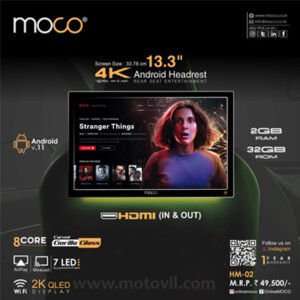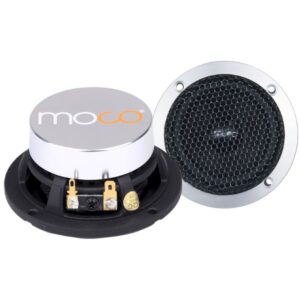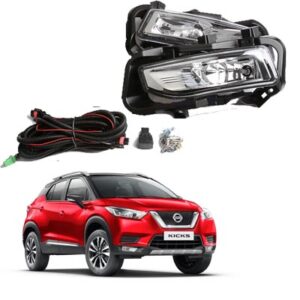If you’re looking to upgrade the entertainment system in your vehicle, you now have more options than ever before. The latest Android-powered car stereos provide many features and benefits that traditional car audio systems simply can’t match. From customizable apps to better smartphone integration, Android car stereos are becoming a popular alternative for drivers seeking more advanced and connected capabilities.
In this comprehensive guide, we’ll explore the key advantages that Android car stereos have over traditional car audio products. You’ll learn how the Android operating system allows for a smarter, more futuristic driving experience. After reading, you’ll know exactly why so many drivers are now choosing Android units to replace their factory OEM stereos. Let’s get started!

Touchscreen Interface and Controls
One of the most obvious advantages of Android auto stereos is that they incorporate a touchscreen interface, much like your smartphone or tablet. This allows for an intuitive control experience and eliminates the need for excessive buttons and knobs. You can simply tap onscreen options to adjust volume, change settings, select media, or navigate menus.
The responsiveness of the touchscreen also surpasses traditional button controls. Commands are quick and smooth, with no delay. Touchscreens allow for more streamlined aesthetics too, decluttering your dashboard. Many Android units now feature high-definition displays for excellent clarity and brightness.
Another benefit is that Android touchscreens employ capacitive sensing technology. This means the screen responds to the touch of your finger, unlike resistive screens that require pressure. Capacitive touchscreens are more precise and accurate when selecting functions. Most traditional car stereo brands still rely on resistive screen technology.
If you’re looking to upgrade the entertainment system in your vehicle, you now have more options than ever before. The latest Android-powered car stereos provide many features and benefits that traditional car audio systems simply can’t match. From customizable apps to better smartphone integration, Android car stereos are becoming a popular alternative for drivers seeking more advanced and connected capabilities.
In this comprehensive guide, we’ll explore the key advantages that Android car stereos have over traditional car audio products. You’ll learn how the Android operating system allows for a smarter, more futuristic driving experience. After reading, you’ll know exactly why so many drivers are now choosing Android units to replace their factory OEM stereos. Let’s get started!
Touchscreen Interface and Controls
One of the most obvious advantages of Android auto stereos is that they incorporate a touchscreen interface, much like your smartphone or tablet. This allows for an intuitive control experience and eliminates the need for excessive buttons and knobs. You can simply tap onscreen options to adjust volume, change settings, select media, or navigate menus.
The responsiveness of the touchscreen also surpasses traditional button controls. Commands are quick and smooth, with no delay. Touchscreens allow for more streamlined aesthetics too, decluttering your dashboard. Many Android units now feature high-definition displays for excellent clarity and brightness.
Another benefit is that Android touchscreens employ capacitive sensing technology. This means the screen responds to the touch of your finger, unlike resistive screens that require pressure. Capacitive touchscreens are more precise and accurate when selecting functions. Most traditional car stereo brands still rely on resistive screen technology.
Customizable Apps
Here is where Android auto stereos pull ahead of the competition. The Android operating system allows you to download compatible Android apps and games directly onto the stereo. This level of customization and expandability is not possible with traditional head units.
You can access apps for music streaming like Spotify, Pandora, and Google Play Music. There are podcast and audiobook apps like Stitcher, Audible, and Google Podcasts for entertaining talk content. You can install navigation apps like Google Maps to supplement onboard GPS and get real-time traffic info.
Android’s open app ecosystem means you’re not restricted to just the stock apps either. You can choose to install any 3rd party Android app of your choice, provided it is optimized for the car stereo’s screen resolution and processor capabilities. This kind of flexibility is not found in traditional car audio units.
No more being limited to just radio or CDs! With an Android car stereo, you can access all your smartphone’s digital content and features right on your dashboard. Android’s ability to multitask also means you can switch between different apps and functions with ease.
Seamless Smartphone Integration
Android car stereos are designed to work harmoniously with your smartphone, unlike traditional audio units that have limited smartphone connectivity. When you connect an Android phone to the stereo via Bluetooth, WiFi, or USB – they sync together into one cohesive system. This integration goes far beyond just allowing hands-free calling and wireless music streaming like older stereos.
One benefit is that you can access your smartphone contacts directly on the Android car stereo’s interface. This allows you to easily make calls by tapping a contact’s name rather than having to pick up your phone. Contacts automatically download to the stereo upon connection.
Your SMS messages and notifications will also appear on the head unit’s display. Using text-to-speech capability, the stereo can even read messages aloud so you don’t have to look away from the road. You can dictate short replies using your voice. Without full smartphone integration, hearing and replying to messages would be much more difficult and distracting.
Many Android units can mirror your smartphone’s display onto the touchscreen. This means you can run apps, play games, watch videos, and more from your phone while utilizing the stereo’s bigger screen and controls. Apple CarPlay and Android Auto-enabled stereos have similar mirroring functionality. With basic traditional audio systems, complex apps are confined to your smartphone only.
Upgradability and future-proofing
Unlike traditional car audio systems that eventually become obsolete, Android auto stereos are designed to be upgradable and can adapt to evolving technologies. Their very operating system receives periodic enhancements that add new features and close security holes.
For example, Google regularly rolls out updated versions of Android Auto that improve wireless connectivity, streamline menus, and allow more customization options. Any Android car stereo can be updated to the newest Android Auto version quickly via online download. Compare this to traditional head units that cannot be upgraded beyond their static factory firmware.
Many Android car stereos also permit hardware upgrades by allowing you to add extra RAM or install amplified speaker systems. Some provide SD card slots or plug-ins to add more storage as needed. Additional ports can enable new connectivity options down the road as well. This upgradability ensures your investment remains compatible and current even after years of ownership.
With traditional factory-installed car radios or low-end aftermarket stereos, you generally get what you pay for – with no ability to enhance functionality over time. But with an Android unit, you benefit from the continuous evolution of the Android platform. The stereo you buy today will actually get better and smarter the longer you own it.
More Choice and Customization
When it comes to traditional car audio products, your options are limited. You may be able to choose between a few different OEM manufacturers or inexpensive stereo brands. But there’s not much that distinguishes them beyond the basics like display size, color, and pre-installed apps. With Android car stereos you get far greater choice, customization, and flexibility.
Head units are available in single DIN, and double DIN, as well as detachable and wireless tablet styles to suit any dashboard configuration. Displays come in sizes between 6 to 11 inches – including unique floating screen designs.
Additionally, since it’s powered by Android, you can customize the look and functionality using downloaded themes and apps. For example, you can set a different color scheme, icon style, and menu layout. Apps allow the enhancement of everything from music playback to vehicle diagnostics. Android also supports Google services out-of-the-box like Google Maps, YouTube, and the Play Store. The openness of the platform is a major advantage.
Improved Audio Quality
Despite all the extra features, Android car stereos still deliver great audio quality – something you expect from any good car audio system. Many Android units match or even exceed the audio capabilities of comparable factory-installed stereos. Audiophiles should find the sound quality very satisfying.
Most Android head units support common audio formats like MP3, FLAC, WMA, and AAC. Some higher-end stereos can play lossless codecs and high-resolution audio as well. Bluetooth streaming usually supports aptX and AAC for optimized wireless audio. The latest Android Auto protocol also transmits sound via USB as 16-bit/48kHz uncompressed PCM.
Android head units often integrate advanced audio tuning tools too like equalizers, crossovers, time correction, and multiband audio processing. This allows you to customize the sound signature to your exact liking and compensate for acoustic deficiencies in your car’s cabin. Audiophile-grade components like high-end DACs and amps are also frequently found in premium Android car stereos.
Compared to basic entry-level car stereos, Android units are certainly capable of delivering a richer, higher fidelity listening experience. With their focus on smartphone integration, many also allow playback of your hi-res digital music library. Audio quality is no longer a shortcoming when choosing more advanced Android auto stereos.
Ease of Installation
One final advantage of Android units is that they are no more difficult to install than traditional aftermarket stereos. The installation process is nearly identical. Just match the stereo’s wiring harness adapter to your vehicle’s specific harness and dashboard kit. Then connect the appropriate wires and insert the stereo into the mounting bracket.
While traditional high-end OEM stereos often use proprietary connectors and protocols – aftermarket Android units keep things simple and universal. The abundance of YouTube tutorials and online documentation also make the DIY installation easier. Android auto stereos provide a new level of technology and performance without added complexity.
Conclusion
If you’re setting out to upgrade your car’s entertainment system and value features like smartphone integration, app flexibility, and ease of use – an Android car stereo is certainly the superior choice over traditional head units. With advantages that include touchscreen controls, countless customizable apps, total smartphone connectivity, and future upgradability – Android provides the most modern in-car experience.
In summary, Android car stereos represent the future of connected automotive infotainment. They turn your vehicle into an extension of your smartphone. And open up a world of options to stay productive, entertained, informed, and safe on the road. We hope this comprehensive guide gives you all the information needed to decide whether an Android auto unit is the right stereo upgrade for your driving needs.




